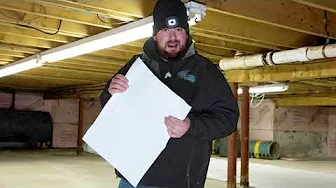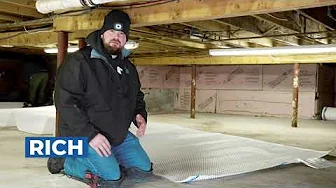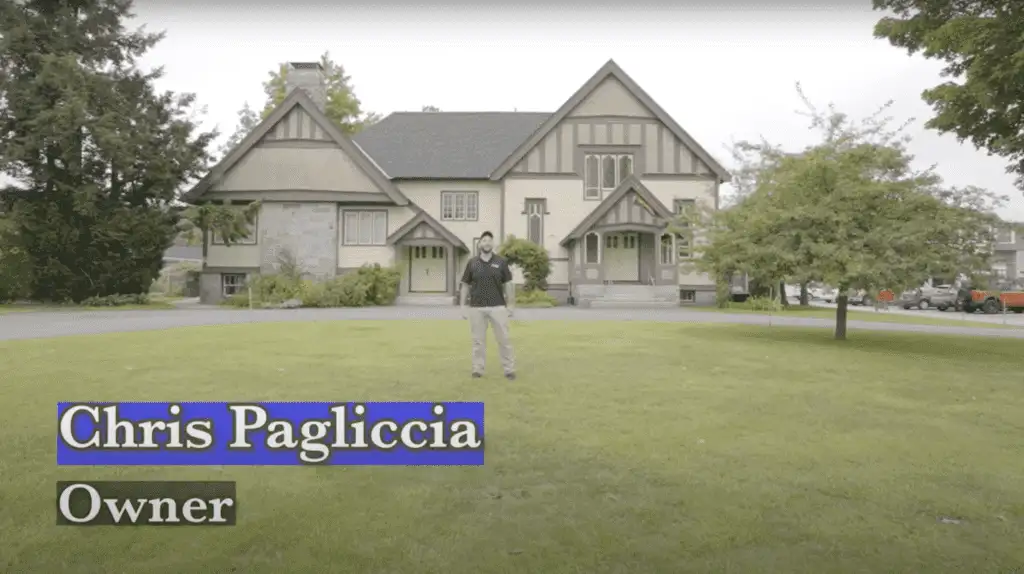Foundation Crack Repair Concord NH
Foundation cracks can compromise the structure and safety of your home. Whether caused by settling, poor drainage, or soil conditions, foundation issues require prompt attention to avoid further damage. Homeowners in Concord, NH, are no strangers to the challenges of maintaining a solid, safe foundation in New England’s fluctuating climate.
Real People - Real Great Results
Crawl Space Video Playlist
Signs You Need Foundation Crack Repair
Foundation issues aren’t exactly shy. The signs are often right in front of you—literally—if you know what to look for. Here are the most common indicators that it’s time to call in a pro:
- Visible Cracks in Walls or Floors: That hairline fracture you’ve been ignoring? It might not be so harmless. Cracks anywhere in your walls, basement floors, or the foundation itself are the first red flags. Some may look cosmetic, but don’t bank on it.
- Uneven Floors: Feels like your home is auditioning to be a funhouse? Uneven or sloping floors are subtle but serious. This could be your foundation shifting under the house—never a good sign.
- Sticking Doors or Windows: If you need a home workout just to yank open a door or nudge a window shut, don’t blame the humidity. It could be structural movement causing the frames to misalign.
- Water Seepage in the Basement: Damp spots, discoloration, or even small puddles in the basement might mean water’s sneaking in through foundation cracks. Left unchecked, this could lead to mold, mildew, or worse.
These symptoms don’t fix themselves. The sooner you address them, the better your odds of preventing more significant damage—and more expensive repairs.
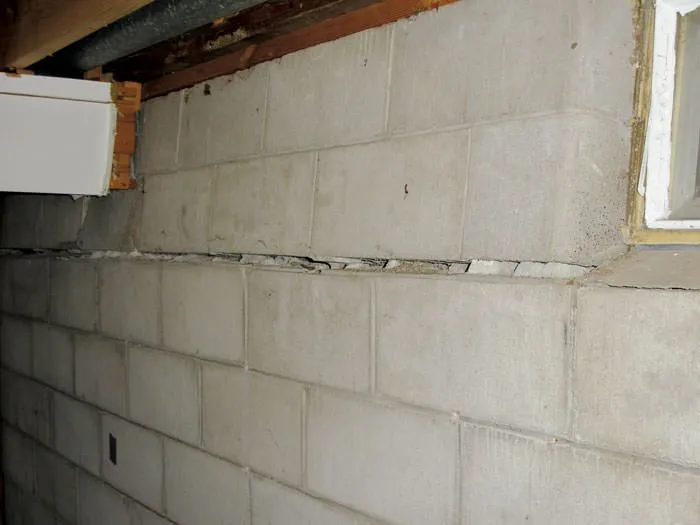
Causes of Foundation Cracks in Concord, NH
In Concord, NH, foundation cracks are a familiar foe for homeowners. New England’s unpredictable weather and regional quirks play no small part in the wear and tear. Here’s a look at the key culprits:
- Freeze-Thaw Cycles: Winter in New Hampshire isn’t just about shoveling snow—it’s about what’s happening underground. When temperatures drop, moisture in the soil freezes and expands. Then, as it thaws, the soil contracts again. This constant freeze-thaw rhythm exerts relentless pressure on your foundation, eventually causing cracks to emerge like a telltale scar.
- Poor Drainage: Rain and melting snow should flow smoothly away from your house, not linger near its base. When water pools around the foundation—thanks to clogged gutters, improper grading, or just sloppy drainage—it weakens the surrounding soil, turning it into a slow-moving wrecking ball for your foundation.
- Soil Movement: New Hampshire soil isn’t static. It swells when wet, shrinks when dry, and occasionally shifts when it feels like it—often dragging your foundation along for the ride. Over time, this movement opens up gaps and cracks, leaving your home vulnerable to even more stress.
- Construction Oversights: As much as we’d like to blame nature entirely, poorly prepared construction sites are also to blame. Foundations without proper reinforcement or compacted soil beneath them may seem fine at first, but they’re often ticking time bombs waiting to crack under pressure.
Understanding why these cracks form is more than just a lesson in local geology. It’s the first step in tackling the issue head-on and safeguarding one of your most significant investments: your home.
Types of Foundation Cracks
Not all foundation cracks are created equal, and understanding their differences is crucial for determining the next steps. In Concord, NH, where weather extremes test the structural integrity of homes, spotting the type of crack early can save you time and money.
- Vertical Cracks: These are often the least worrisome of the bunch but don’t mistake “normal” for harmless. Vertical cracks usually result from a natural settling process as the house adjusts to its environment over time. Left unattended, however, they can still let in moisture, turning a manageable issue into a larger one.
- Horizontal Cracks: If there’s a red flag for your foundation, this is it. Horizontal cracks typically indicate significant pressure from outside forces, like heavy or waterlogged soil pressing against the foundation walls. These need immediate attention, as they can jeopardize the stability of your home.
- Stair-Step Cracks: If your home has a brick or block foundation, this zig-zag pattern is one to watch. Often caused by settling or shifting, stair-step cracks can worsen with freeze-thaw cycles common to New Hampshire winters. They’re a telltale sign of foundation movement and shouldn’t be ignored.
- Hairline Cracks: Tiny and often easy to overlook, hairline cracks can be deceptively risky. On their own, they’re not a structural concern, but they frequently serve as a gateway for water intrusion. And water, as any homeowner knows, rarely behaves itself—mold, erosion, and widening cracks can follow.
Identifying the type of crack isn’t just academic; it dictates everything about how you’ll address it. Is it a simple DIY patch, or does it require a professional-level solution? That’s the question every homeowner in Concord should be ready to answer when a crack appears.
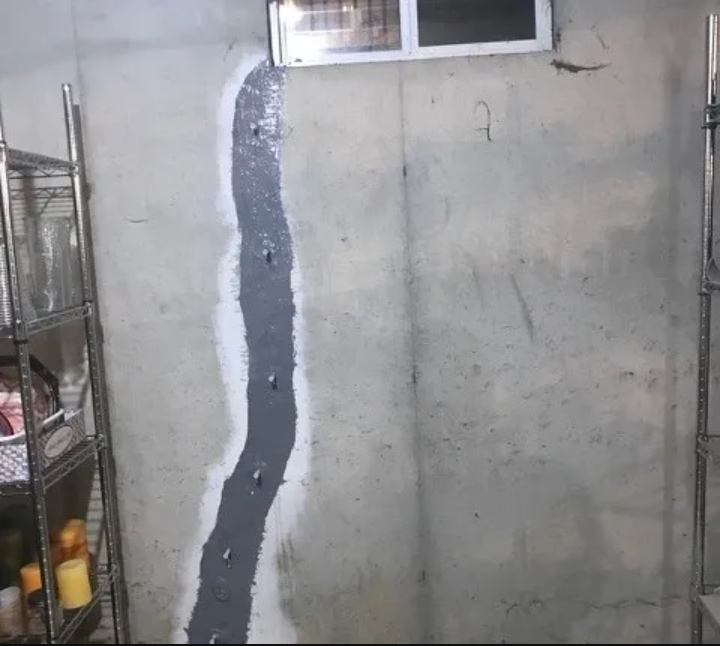
Foundation Crack Repair Methods
When it comes to repairing foundation cracks, the right method depends on the type of crack, its severity, and the root cause of the issue. Not every crack is a full-blown emergency, but ignoring even minor ones can turn a manageable problem into a costly headache. Below are the most common repair methods used by professionals:
- Epoxy Injection: For small, non-structural cracks, epoxy injection works like glue for your foundation. It seals the crack tightly and restores some of the lost structural integrity. Quick, effective, and budget-friendly, this method is ideal for interior cracks that aren’t exposed to excessive water infiltration.
- Polyurethane Foam Injection: A step up from epoxy, polyurethane foam injection is designed to not only seal cracks but also block water from entering. The flexibility of the foam makes it a solid choice for foundations that might continue to experience slight shifts or movement.
- Carbon Fiber Reinforcement: Horizontal cracks, especially ones caused by pressure from soil outside your home, often signal structural weakness. Carbon fiber strips are the go-to solution for stabilizing the affected wall. These strips are both lightweight and immensely strong, providing reinforcement without the need for invasive structural overhauls.
- Underpinning: When foundation settlement becomes critical—causing wide cracks, sinking, or uneven floors—underpinning is the long-term fix. This method involves strengthening the foundation by extending its base to more stable soil layers. While it’s the most intensive option, it’s often the only choice for severe structural issues.
- Exterior Waterproofing: Prevention meets repair here. By installing an exterior waterproof membrane, professionals essentially create a barrier to stop moisture from ever reaching your foundation. This method is commonly paired with crack repair to ensure no water compromises the affected area moving forward.
Each method has its place, and the key is knowing when to use what. A professional assessment can help determine the best course of action for your specific situation, ensuring the repair is as lasting as it is effective. Don’t DIY foundation repairs—your home’s stability isn’t something you can afford to gamble on.
Choosing a Foundation Repair Professional in Concord, NH
Selecting the right contractor for foundation crack repair isn’t just about fixing the problem—it’s about ensuring your home’s long-term stability. A little due diligence goes a long way, and here’s how to get it right:
- Experience Matters: Foundation repair isn’t a one-size-fits-all job. New Hampshire’s unique weather and soil conditions call for professionals who know the terrain, literally. Look for a contractor with a proven track record of handling repairs in Concord and surrounding areas. Bonus points if they’re familiar with issues specific to New England, such as freeze-thaw cycles and water table fluctuations.
- Licensed and Insured: No license? No deal. Any contractor worth your time (and money) should be fully licensed to operate in New Hampshire and carry insurance. This protects both you and the workers if something goes sideways during the repair. Don’t just take their word for it—ask for documentation.
- Check the Buzz: The internet is your best friend here. Read reviews, scour testimonials, or even better, ask for references. A solid contractor will have a history of happy homeowners who don’t mind sharing their experience. If you come across repeated red flags—missed deadlines, low-quality materials, or lackluster communication—move on.
- Warranty or Walk Away: Real talk: foundation repair isn’t cheap. But it’s an investment that should last for years, even decades. A reputable contractor will back up their work with a warranty. Be sure to get the terms in writing and understand what’s covered—and for how long. A warranty isn’t just peace of mind; it’s a commitment to quality.
- Thorough Inspection and Plan: Beware of anyone who gives you a quote without even looking at the damage. The right professional will take the time to perform a detailed assessment, including checking the extent of the crack, surrounding damages, and potential underlying causes like soil conditions or drainage issues. They should present you with a clear, step-by-step repair plan—and answer any questions you have without dodging.
Bottom line? This is your home, so it’s okay to be picky. The right pro in Concord, NH, will not only repair the issue but help you prevent future problems, saving you money, hassle, and a whole lot of stress in the long run.

Why Prompt Repairs Matter
Foundation cracks don’t just sit there quietly. They grow, shift, and multiply, often when you’re least prepared to deal with the consequences. What starts as a barely noticeable hairline fracture can evolve into a structural nightmare if left untreated. The longer you wait, the more the risks—and costs—compound.
Structural instability is the most obvious concern. A compromised foundation is like a chain with a weak link—it puts the entire structure of your home at risk. Walls can bow, floors can sag, and doors can jam. These aren’t just nuisances; they’re warning signs that your home’s stability is eroding. Sure, a cracked wall might seem cosmetic at first glance, but it can quickly turn into something far more serious.
Then there’s the money factor. Early intervention almost always costs less. Sealing a small vertical crack with epoxy injection is relatively inexpensive compared to the time, labor, and materials required to stabilize a wall buckling under soil pressure. Small cracks are repairable; delays transform them into something you’ll need a loan to fix.
Water damage is another sneaky consequence. Cracks are an open invitation for water to seep into your basement. Once inside, it doesn’t just cause puddles. It invites mold, mildew, and rot to set up shop, degrading both your foundation and your air quality over time. Wet basements aren’t just unpleasant; they can become health hazards.
Finally, there’s your home’s value to consider. Foundation issues scare off buyers faster than anything else. Even if you’re not planning to sell anytime soon, untreated cracks will inevitably show up on a property inspection report, giving potential buyers leverage to demand a lower price—or walk away entirely.
Bottom line? Acting fast is easier and cheaper than fixing a bigger mess down the road. Spot the crack, fix the crack, and sleep easier knowing your home’s foundation is solid—literally.
Preventing Foundation Cracks
Preventing foundation cracks doesn’t require a degree in structural engineering, but it does demand consistent effort and attention to detail. Here’s where to start:
- Maintain Proper Drainage: Water is your foundation’s worst enemy. Gutters clogged with leaves or downspouts that dump rainwater near your house can lead to water pooling around the foundation. Keep gutters clean, add downspout extensions, and ensure the ground slopes away from your home. A little water management now can save you from a hefty repair bill later.
- Control Soil Moisture: New England is known for weather swings, and the soil around your home feels the impact. Dry spells can cause soil to shrink, pulling away from the foundation and creating gaps. Then, when the rain returns, the soil expands, exerting pressure on the walls. A low-cost solution? Regularly water the soil around your house during prolonged dry periods to keep moisture levels consistent.
- Monitor Landscaping: Love those big, leafy trees? Your foundation might not. Tree roots don’t just stop growing because they hit concrete—they keep searching for water relentlessly. Plant larger trees and bushes at least 15 feet away from your home, and choose plants with less aggressive root systems for areas closer to the foundation.
- Inspect Regularly: Here’s a no-cost tip: pay attention. Walk around your home a couple of times a year and scan for small cracks or signs of shifting. Don’t just check the visible foundation; look at interior walls, floors, and basement corners. Catching a minor issue now could save you from a major headache (and expense) later.
Preventing foundation cracks isn’t glamorous, but it’s far easier and cheaper than dealing with a compromised home. A little foresight today keeps your foundation—and your budget—stable tomorrow.
Conclusion
Foundation cracks are not a “wait and see” situation. These seemingly small issues can quickly snowball into major structural headaches if left unattended. In a region like Concord, NH, where the elements aren’t always gentle, the stakes are even higher. Whether it’s freeze-thaw cycles wreaking havoc on your soil or water sneaking into your basement, neglecting cracks isn’t just risky—it’s expensive.
The good news? You don’t have to tackle this alone. Prompt action, regular inspections, and calling in the right professionals can keep your home on solid ground—literally. Catching a crack early means less cost, less hassle, and a foundation that’s built to last. Don’t treat it like an optional cosmetic fix; treat it like what it is—a key investment in your home’s safety, value, and longevity.
Reviews from Happy Customers
Our top priority is customer satisfaction, and we work closely with clients to understand their unique needs and goals.




